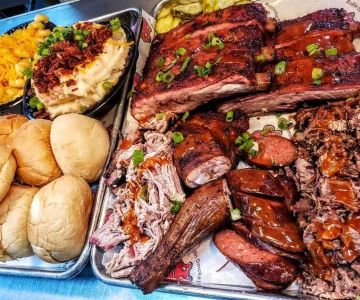- 1-understanding-the-purpose-of-your-review
- 2-preparation-before-visiting-the-restaurant
- 3-key-elements-to-include-in-your-review
- 4-writing-tips-to-engage-your-readers
- 5-common-pitfalls-to-avoid
- 6-real-life-example-of-a-successful-restaurant-review
- 7-additional-resources-and-recommendations
1. Understanding the Purpose of Your Review
Writing your own restaurant review is more than just sharing your dining experience; it’s about informing and guiding potential diners. When you learn tips for writing your own restaurant review, you understand the importance of honest, detailed feedback that helps readers make informed decisions.
Keeping your review balanced, fair, and respectful helps build credibility and trust.
2. Preparation Before Visiting the Restaurant
Before writing your review, preparation is key. Research the restaurant’s menu, ambiance, and customer service style. Arriving with an open mind ensures an unbiased experience. Note down your expectations, as these will shape how you perceive your visit and craft your review.
3. Key Elements to Include in Your Review
When writing your own restaurant review, consider these essential components:
- Food Quality: Describe flavors, presentation, and freshness.
- Service: Evaluate friendliness, responsiveness, and professionalism.
- Ambiance: Detail the atmosphere, decor, and comfort.
- Value: Discuss pricing in relation to quality and experience.
- Uniqueness: Mention any standout dishes or special touches.
4. Writing Tips to Engage Your Readers
Use vivid language and personal anecdotes to make your review relatable and engaging. Avoid jargon or overly technical terms; keep the tone conversational yet professional. Incorporate sensory details — describe the aroma, texture, and taste to transport your reader to the table.
5. Common Pitfalls to Avoid
Steer clear of biased opinions, vague statements, and unsubstantiated claims. Avoid focusing solely on negative or positive extremes. Balanced reviews provide the most value to readers.
6. Real-Life Example of a Successful Restaurant Review
Take the example of a food blogger who wrote a detailed review of a local bistro. By combining honest critique with heartfelt storytelling, they attracted a wide readership and helped boost the restaurant’s popularity. This highlights the power of well-crafted reviews.
7. Additional Resources and Recommendations
For more detailed guides and expert tips on restaurant reviews, visit Senix Table. You can find resources that help you enhance your writing skills and discover the best dining spots with confidence.







 Louis Deli4.0 (59 reviews)
Louis Deli4.0 (59 reviews) Nidda Thai Cuisine4.0 (914 reviews)
Nidda Thai Cuisine4.0 (914 reviews) Wimpy's Hamburgers4.0 (274 reviews)
Wimpy's Hamburgers4.0 (274 reviews) Maui Bowls4.0 (74 reviews)
Maui Bowls4.0 (74 reviews) Victory4.0 (314 reviews)
Victory4.0 (314 reviews) Aloha Poke Co5.0 (2 reviews)
Aloha Poke Co5.0 (2 reviews) Best Places for Seafood Boils and Clambakes Across the U.S.
Best Places for Seafood Boils and Clambakes Across the U.S. Discover Delicious Vegan Desserts at Local Bakeries Near You
Discover Delicious Vegan Desserts at Local Bakeries Near You Best Late-Night Eats in Major U.S. Cities: Where to Satisfy Your Midnight Cravings
Best Late-Night Eats in Major U.S. Cities: Where to Satisfy Your Midnight Cravings The Ultimate Guide to New Year’s Eve Dining in Major Cities
The Ultimate Guide to New Year’s Eve Dining in Major Cities The Future of Sustainable Restaurants in America: Trends and Innovations
The Future of Sustainable Restaurants in America: Trends and Innovations Best Smoothie and Juice Bars for a Quick Healthy Bite
Best Smoothie and Juice Bars for a Quick Healthy Bite